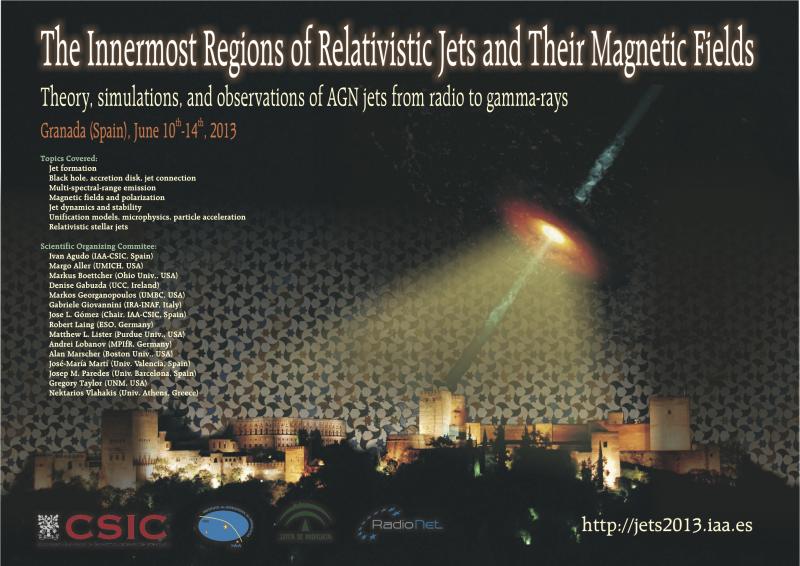The Innermost Regions of Relativistic Jets and Their Magnetic Fields. Granada (Spain). June 10th-14th, 2013.
Errando, Manel
Observations of low- and intermediate-frequency-peaked BL Lacs above 100 GeV with VERITAS.
Author list: M. Errando, for the VERITAS Collaboration
Most of the ~50 blazars detected to date at very high energies (VHE, E>100 GeV) are high-frequency-peaked BL Lacs (HBLs). Low- and intermediate-frequency-peaked BL Lacs (LBL/IBLs, with synchrotron peak frequencies in the infrared and optical regime) have only been detected by ground-based gamma-ray telescopes on a handful of occasions, typically during flaring states. LBLs and IBLs are generally more powerful, more luminous, and have a richer jet environment compared to HBLs, with the accretion rate being typically proposed as the main driver of these differences. The VERITAS array located in southern Arizona has observed five known VHE LBL/IBLs since 2009: 3C 66A, W Comae, PKS 1424+240, S5 0716+714 and BL Lacertae, with exposures of 5-10 hours/year. The results of four years of observations will be presented, including the first low-state detections of 3C 66A and W Comae; a bright, sub-hour scale VHE flare of BL Lacertae in June 2011, and the detection and characterization of two new IBLs: VER J0521+211 and B2 1215+30. The new observational results will be discussed in the context of characterizing the emission from blazars with powerful jets and the role of photons external to the jet in the production of gamma-ray emission.




